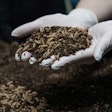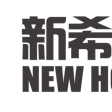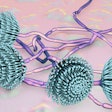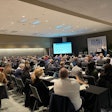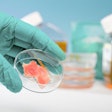Event size and nutrition trends leave lasting
impression
Last week I attended my first EuroTier in Hanover, Germany.
It certainly lived up to its reputation as the premier international animal
husbandry trade show, the largest of its kind.
One week later, I’ve had some time to reflect on the experience,
what I saw and what I took away from the show. Painting a picture for those who
have never attended the event and also identify a couple of trends, here are
four of my takeaways from EuroTier:
1. Wow, this show is
HUGE
All in all, the show encompassed 15 halls and additional
conference and meeting spaces, spanning what seemed to run for miles. I’m not
exaggerating when I tell you they operate shuttles to transport attendees from
one side of the grounds to the next.
Luckily I was able to spend much of my time in conjoined
halls 14, 15, 16 and 17, where the feed- and nutrition-related booths were located, so I managed alright.
The event drew 156,000 visitors – 30,000 from outside of Germany, reports DLG, the event organizer.
2. Common themes among
additive suppliers
This go-round, the world’s producers are increasingly
interested in tapping into the knowledge and strategies deployed in the EU since
the 2006 ban on AGPs in animal feed.
The fostering and maintenance of animal gut health and the
role it plays in immunity were one of several ubiquitous themes. Milk
replacement manufacturer Nukamel hosted a one-day event on the eve of Eurotier
focused on the topic. While BIOMIN and many other suppliers pushed its importance
at their stands.
Discussion of sustainability and all aspects of animal
welfare also presented a common thread in the areas that covered all sectors of
animal agriculture.
3. Young animal health:
a hot topic
Regardless of species, neonatal nutrition was another prevalent
theme among additive suppliers.
For example, LeSaffre’s neonatal program focuses on the three
important stages in a calf’s life – late pregnancy, neonatal and pre-weaning – with
three additive solutions. Immunity transfer via colostrum; illness (diarrhea)
prevention; and the impact early life care played on the animal’s long-term
performance form the basis of this program.
In meeting with a representative from AB Agri’s new AB Neo
business, the company believes “neonates hold the key to switching on lifetime
performance.” It recently launched neonate nutrition product for piglets, one
where the animal need only be feed the pelleted product for the first six weeks
of life. The product has been thoroughly tested in the UK before its official
launch on November 3.
Also on the swine side, Cargill Animal Nutrition also pushed its
Neopigg RescueCare system. The system, produced by piglet feed producer and
additive supplier Promivi B.V., aims supplement the feeding needs of the young
piglets by ensuring they receive the nutrition that may not otherwise be
provided by its mother due to increased live pig births.
And those are just a few examples; many more suppliers pushed
this message in their promotional materials and booth displays.
4. Getting down to
business
The event showcased more than 2,300 exhibitors. Walking the
halls, I passed scores of intense conversations held in the elaborate trade
booths. I’ve been to many trade shows in my career, but there was certain
energy to EuroTier that I haven’t seen before.
Perhaps it’s because of the event’s scale and frequency (a two-year
gap between events), but the attendees entered the event with a purpose – to find
seek out the latest and greatest in their particular area of interest. Everyone
seemed to move at a faster pace and each exhibitor came well-staffed and ready
to engage.
In the end, I ran out of time, with much more that I wanted to see and booths left unvisited. I’m looking forward to EuroTier’s 2016 edition.





